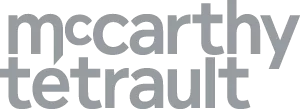- with Senior Company Executives, HR and Finance and Tax Executives
- with readers working within the Accounting & Consultancy, Healthcare and Law Firm industries
IoT, or the Internet of Things, has been a fashionable buzzword for the past decade. IoT devices cover a wide gamut of devices and gizmos, ranging from wearables that track our biometrics, sensors that control our HVAC and security, to home automation that elevates our creature comforts at home.
While the privacy and security implications of IoT devices have been extensively discussed, their evidentiary value in litigation is often overlooked. For example, could the activity logs from a smart door lock be used to demonstrate the ingress and egress of a specific individual in a legal case? Similarly, could biometric data -- such as heartbeats tracked by a smartwatch -- be employed to corroborate an individual's activities during a particular timeframe? While these types of evidence have been used in criminal trials, they are infrequently discussed or utilized in civil matters. Given the prevalence of IoT devices, this fact may change in short order.
Who, When, What, & Where
From a forensic perspective, because many of us interact with IoT devices regularly – whether knowingly or inadvertently – IoT devices can generate a vast amount of data with potentially high evidentiary value.
Consider this scenario: an individual drives to the office after hours, enters the building, and heads to her workspace. She powers on her work computer and transfers several business documents to her personal cloud storage. After completing the transfer, she shuts down the computer, leaves the office, and drives home.
In a typical forensic investigation, the likes of which we encounter often, the initial focus would be on the computer, searching for artifacts that indicate document access and transfer. However, the investigation could be significantly enhanced by examining her smartphone, which may double as her car key and interface with the vehicle's infotainment system. Additionally, a dash cam could show other occupants who accompanied the individual.
Furthermore, access to the office was likely granted via an RFID keycard or a smart device like a smartwatch or smartphone. Upon entry, the elevator was likely used, and her presence triggered the thermostat and lighting systems to adjust accordingly. Each of these interactions generated data points with precise metadata, most notably timestamps.
When combined with the digital artifacts from her computer more commonly used in civil matters, these additional data sources allow forensic investigators to reconstruct her movements and actions with a level of detail and evidentiary precision that was previously unattainable.
IoT Evidence: To Request or Not Request
This begs the question: should lawyers request a forensic copy of IoT devices potentially relevant to the litigation or investigation? This decision depends on several factors. Obtaining data from IoT devices can be challenging, particularly regarding where the data is actually located. While smartphones are commonly used as hubs for IoT devices, such as controlling HVAC settings or closing garage doors, the IoT data may not always reside on them. To access IoT data, one typically needs to access the IoT portal, which is usually provided by the device manufacturer. However, obtaining this data requires the subject's cooperation and the necessary login information.
Given the vast number of IoT devices deployed, collecting data from all relevant devices could be time-consuming and costly. Additionally, privacy concerns arise, as obtaining IoT data without the subject's cooperation and necessary login information may be unfeasible. While a court order or legal request could potentially overcome these obstacles, success rates vary.
Experts in Your Corner
IoT data is often overlooked, but as it can provide crucial information and valuable evidence during investigations or litigation, it should not be ignored or dismissed. While accessing and collecting IoT data can pose challenges, proper planning and preparation can mitigate these issues. Forensic tools have also made significant strides, increasing the availability of data points for evidentiary use. A seasoned practitioner can help lawyers shine a light on this emerging realm of evidence.
To view the original article click here
The content of this article is intended to provide a general guide to the subject matter. Specialist advice should be sought about your specific circumstances.



